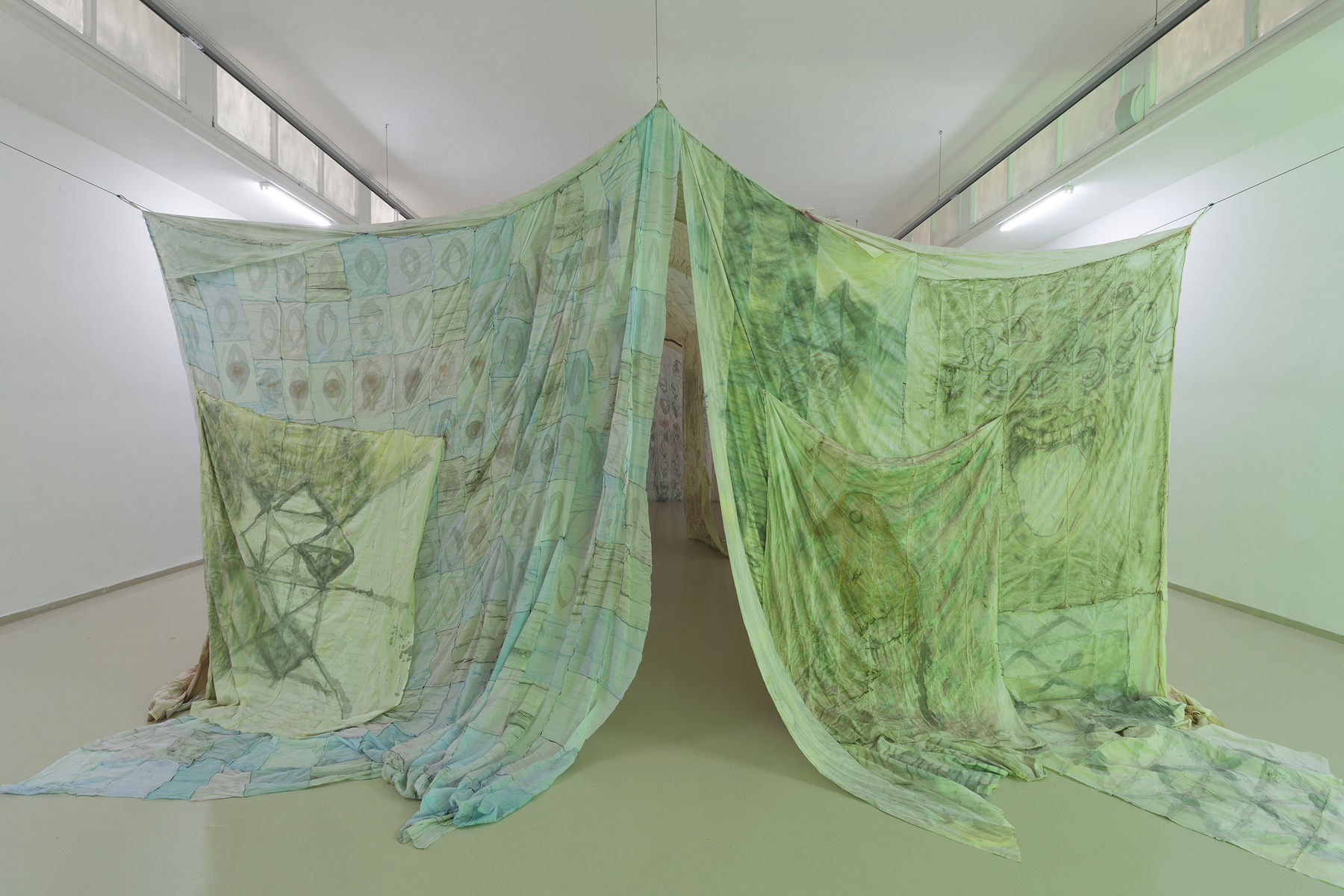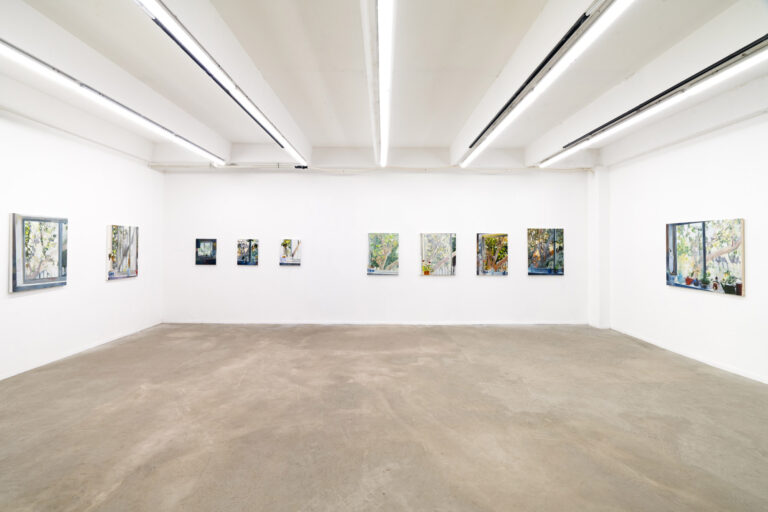Artists: Gili Avissar (in collaboration with Omer Sheizaf)
Exhibition title: Tender Cut
Curated by: Smadar Keren
Venue: Beit Uri and Rami Nehushtan Museum, Kibbutz Ashdot Yaakov Meuhad, Israel
Date: May 27 – August 26, 2017
Photography: Elad Sarig, all images copyright and courtesy of the artists and Beit Uri and Rami Nehushtan Museum
Tender Cut, Gili Avissar’s solo show, comprises one single object: a tent, a temporary structure used as a home in nomadic or refugee situations. The tent Avissar has installed in the center of the main display space of the museum is made of 400 strips of fabric, sewn together and hand-painted with thinned acrylic paint. It is a complete yet fragmented object, a structure made of segments resembling pieces of skin stripped from a living body, and, like many other works by Avissar, possessing human-like traits. It is tender, intimate, vulnerable, and at the same time mysterious and subtly sinister. The placement of the tent in the museum, as a space-within-a-space, creates a duplication; It echoes and presumably nullifies the building, but in fact, the tent needs the museum and seems safe within its walls. Is it a display space? A hospitality tent? A ceremonial hall, or a haven alluding to a disaster?
As a part of the show, Avissar has invited the artist and lighting designer Omer Sheizaf to create a new piece that would respond to the tent. The invitation is, by intent and pre-design, a call to interfere – Sheizaf’s light installation Crop and Makeup is positioned in the museum’s hallway, and, while it exists as a separate work, it interferes the movement of the visitors in the space, and affects the appearance of the tent.
Tender Cut continues Avissar’s investigation of temporary states and the constant search for a longed-for, ambiguous home, accepting yet threatening, protective but also rickety. However, this time Avissar makes a new move – he substitutes the single for the plural, turning the physical object into a mechanism and a language. He manufactures an arena that is simultaneously object and space, skeleton and body, envelope and content, creating an autonomous system that is independent and yet remains in constant touch with its environment.























